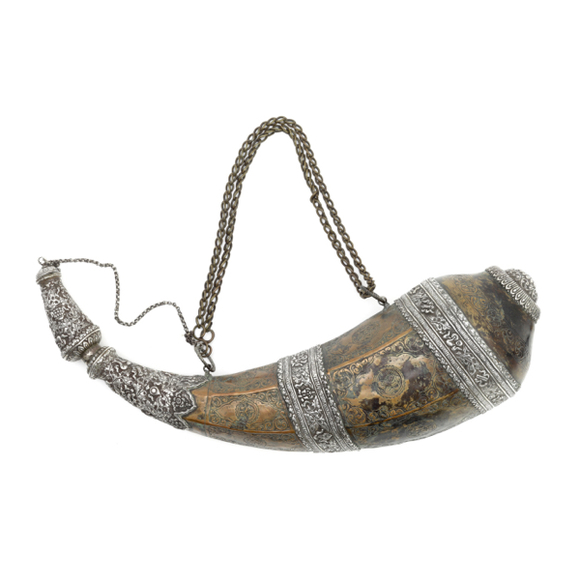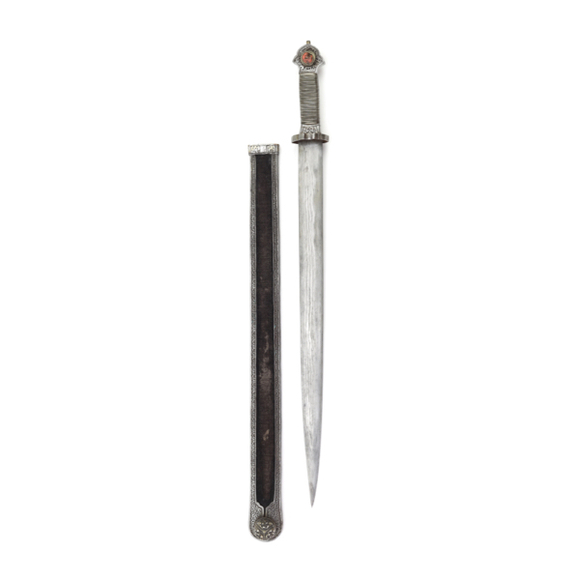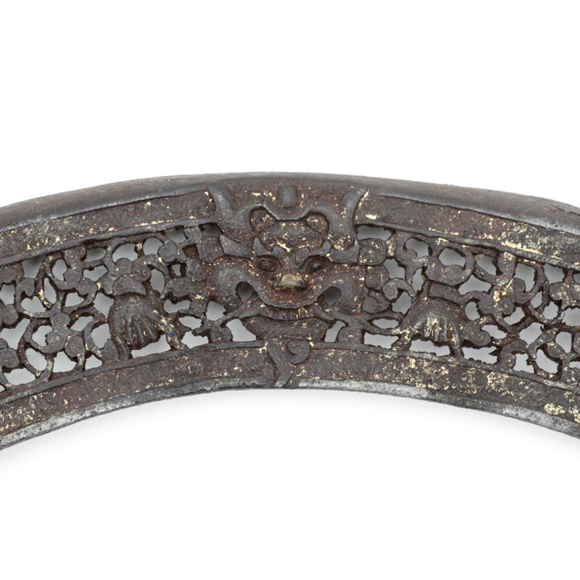Such work was made in the Royal workshops of Lhasa.
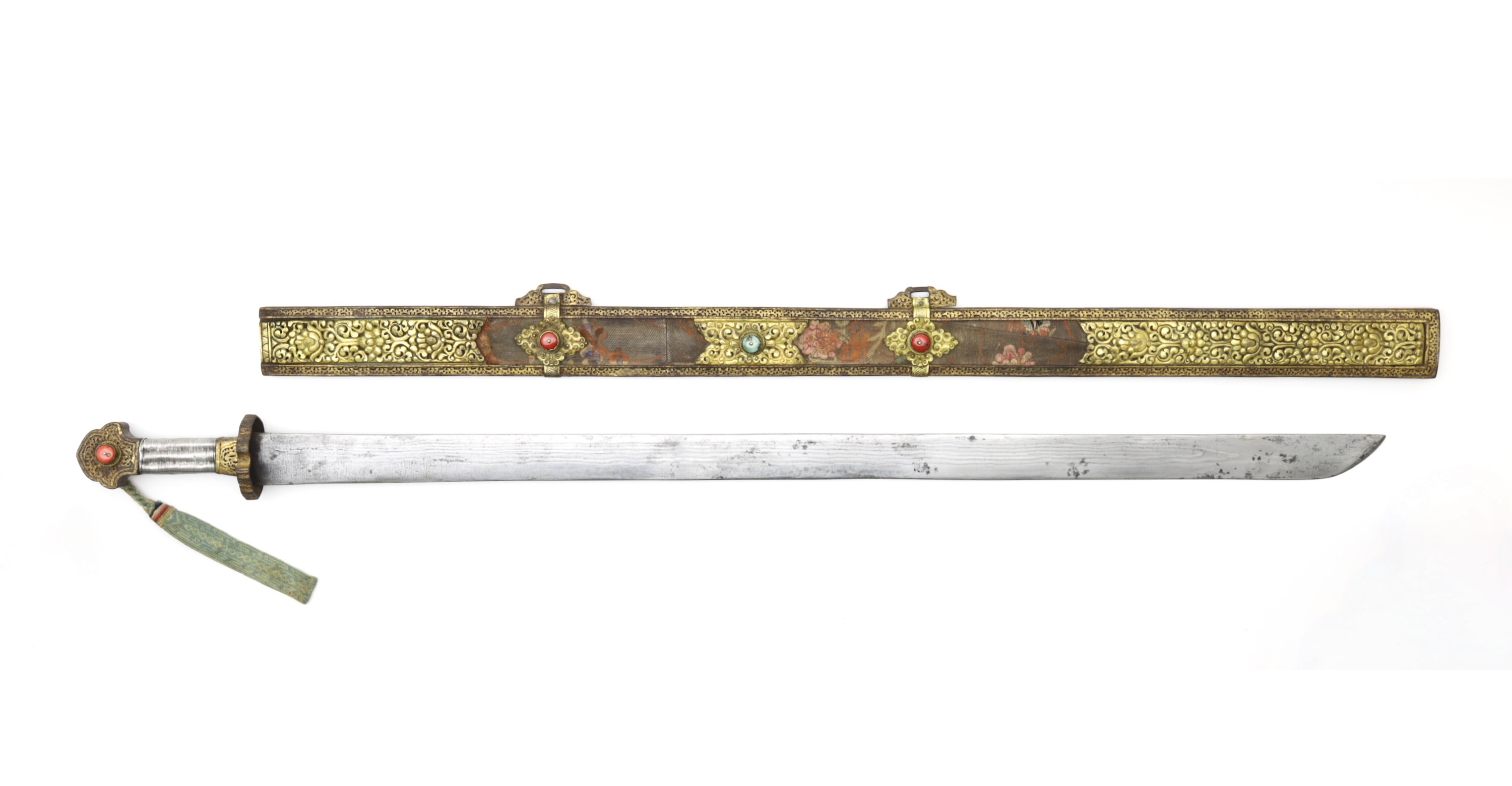
Sheathed 100 cm
Sword 97.5 cm
85 cm
Base 5.2 mm
Middle 4.6 mm
5 cm from tip 2 mm
Base 39 mm
Middle 34 mm
5 cm from tip 33 mm
Sheathed 1978 grams
Sword 993 grams
27.4 cm from hilt
Iron, steel, silver, gold, copper, wood, silk
Ü-Tsang, Tibet
18th-19th century
Robert Hales
A British private collection
Description
A Tibetan slung sword, dpa’dam, as worn primarily in the eastern region of Tibet:
"...the sword is worn in front of the person, as are nearly all Tibetan swords.
In Lit’ang, Ch’amdo, and a few other localities, however, a variety of sword is made which is worn in Chinese fashion, hanging from the left side..."
-William Woodville Rockhill; Notes on the ethnology of Tibet.
Washington, 1895. Page 712.
The slung from a belt, edge-down configuration is ideal for horsemen, as opposed to the footman who draws the sword edge up for a first downward strike. The Japanese make the same distinction between the slung tachi and belt-worn katana.
It has a large hairpin forged blade of typical form and construction, with the usual cold shuts seen in Tibetan work. This is due to the low oxygen levels in the air that made it difficult to reach the high temperatures smiths could reach at sea level.
Hilt with iron mounts of classic form, pommel and ferrule damascened with swastika motifs and the guard with floral scrollwork. The wooden grip section is wrapped with silver wire.
Scabbard
The scabbard has the characteristic U-shaped frame that holds the two scabbard halves, damascened with swastika patterns on the sides and pierced on the front.

Both scabbard halves are covered with with silk brocade. Bolts of such silk were presented to Tibetan monasteries by Chinese, Indian, and Mongolian pilgrims and were perfectly preserved in the Tibetan climate. Such fabrics saw use as priest’s robes and on swords like this, and often predate the swords they are used on by centuries.
The front of the scabbard has three ornamental plates, pierced and worked in repousse representing stylized floral scrollwork and lotuses. These are almost always made of silver, but in this case, fire-gilt copper. It was undoubtedly worn by a member of the high nobility.
Two suspension bands wrap around the scabbard, with suspension mounts riveted to their tops.
It also retains its original braided silk lanyard, which is rarely preserved on these.
Condition
Very good condition for the genre. There is some wear to the overlaid gold on the iron parts, but the fire-gilded areas are almost entirely preserved. Some scruffing on the fabric on both sides. The corals and turquoise are replacements, the originals had gone lost.

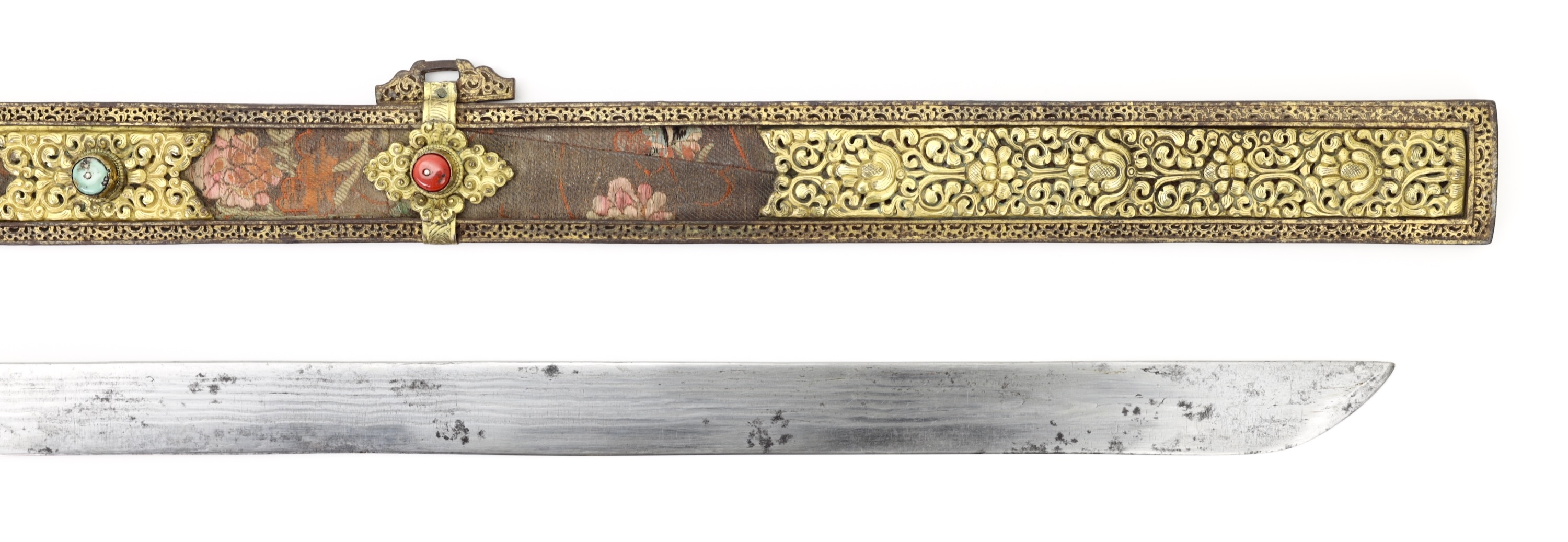

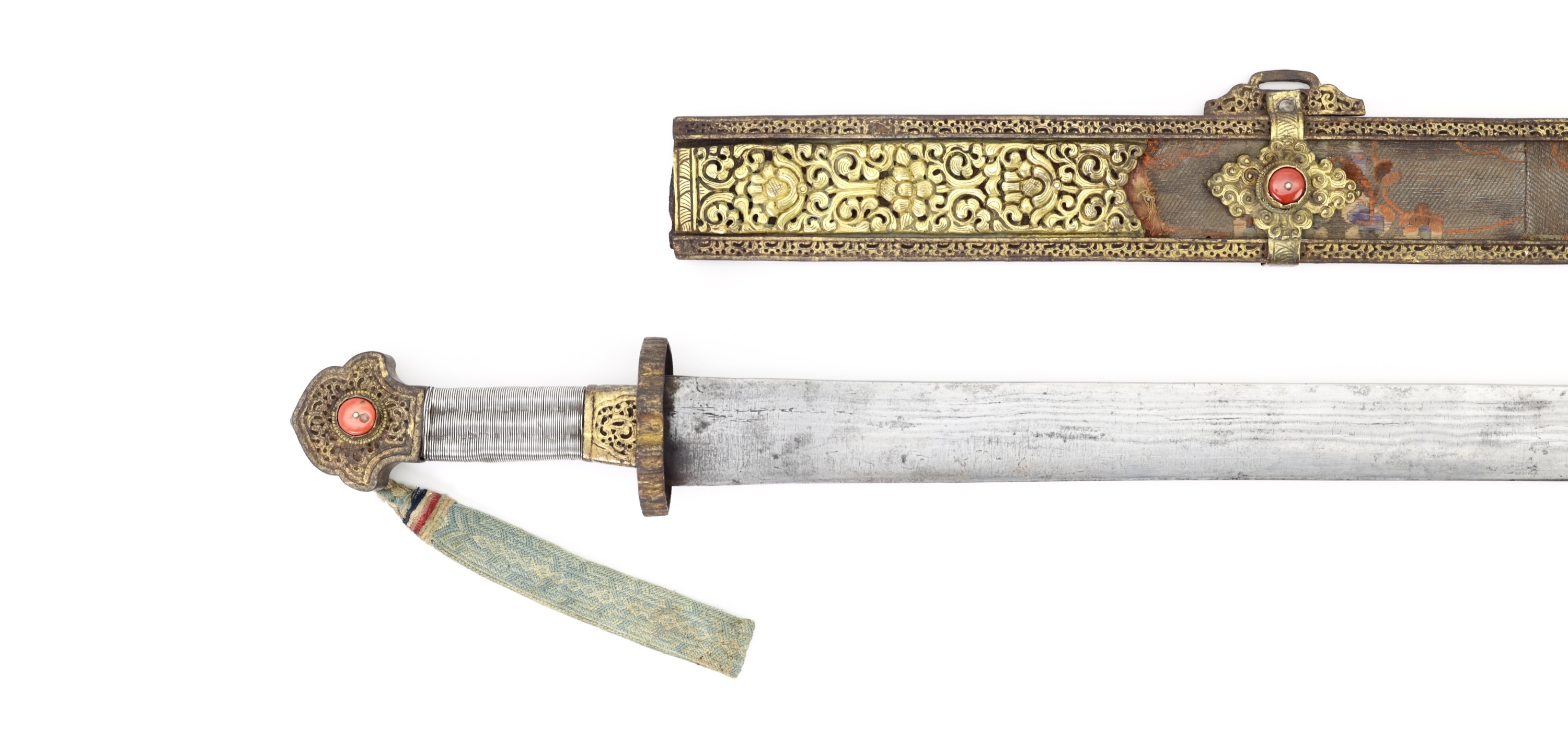
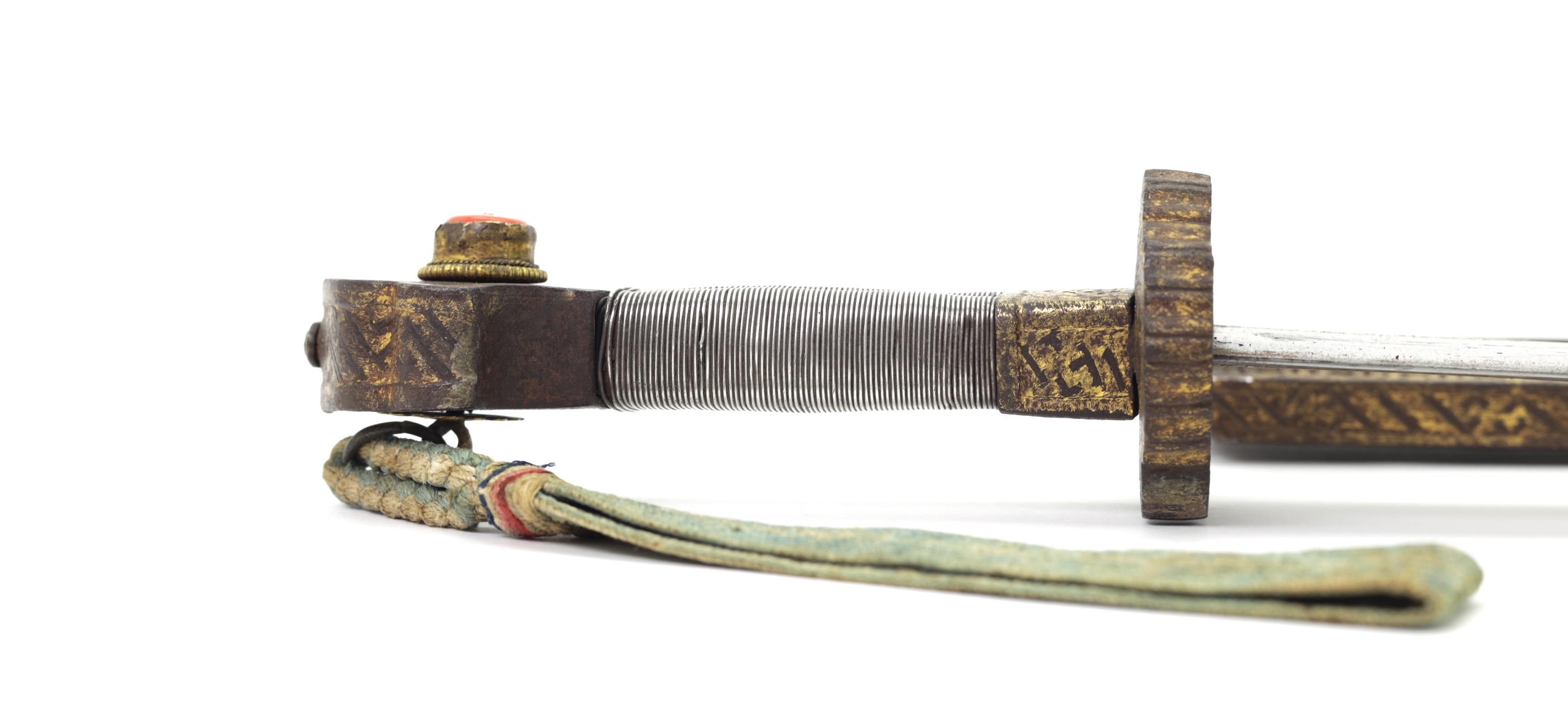

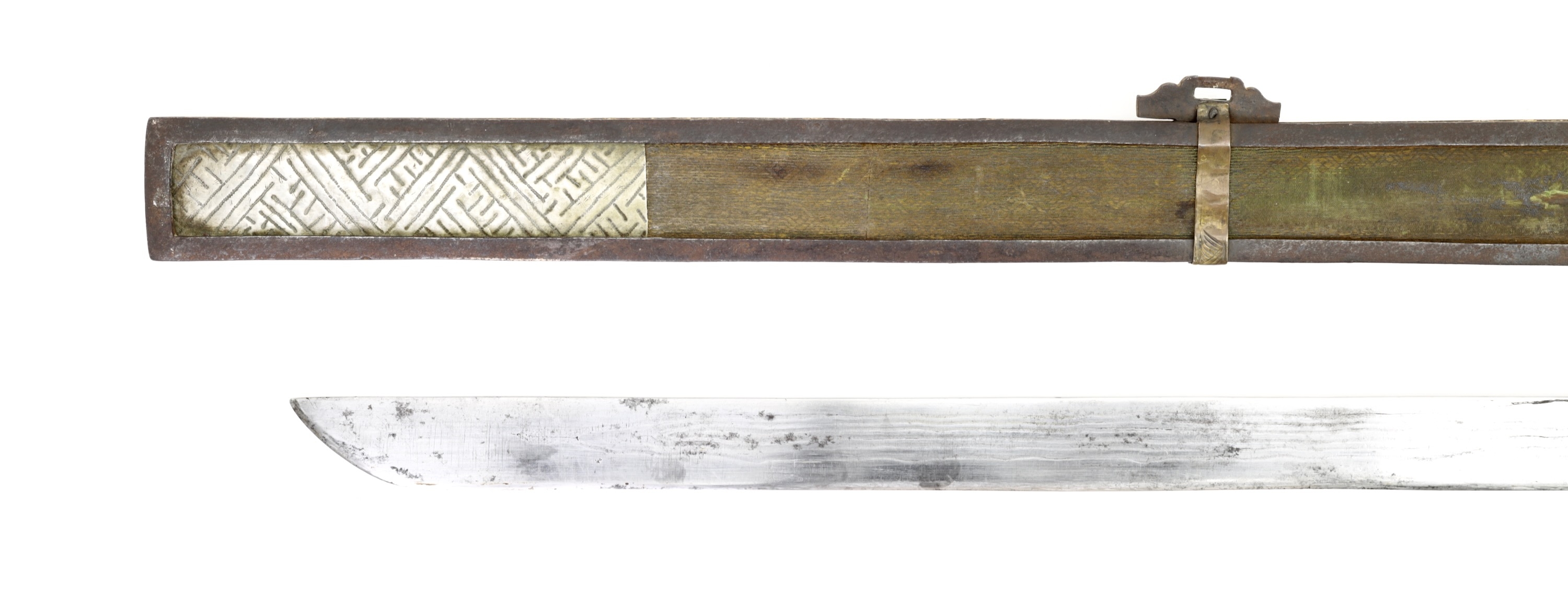
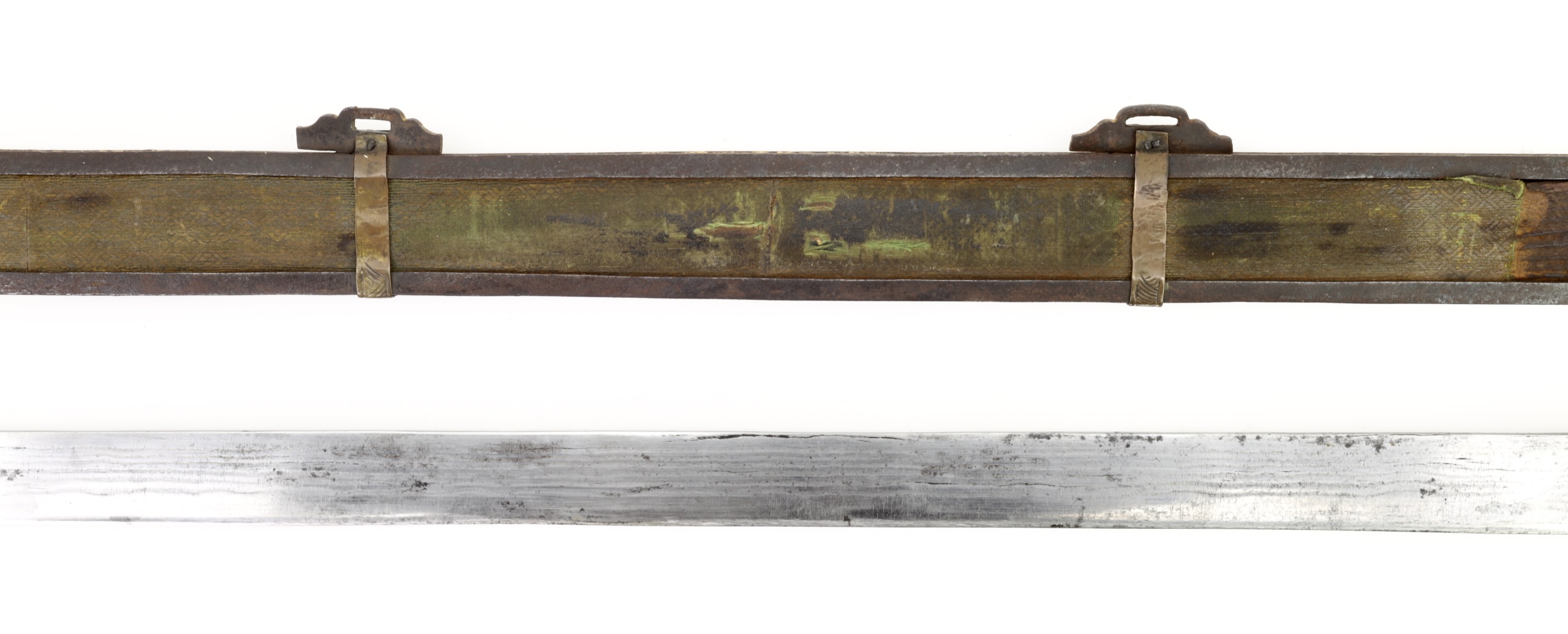



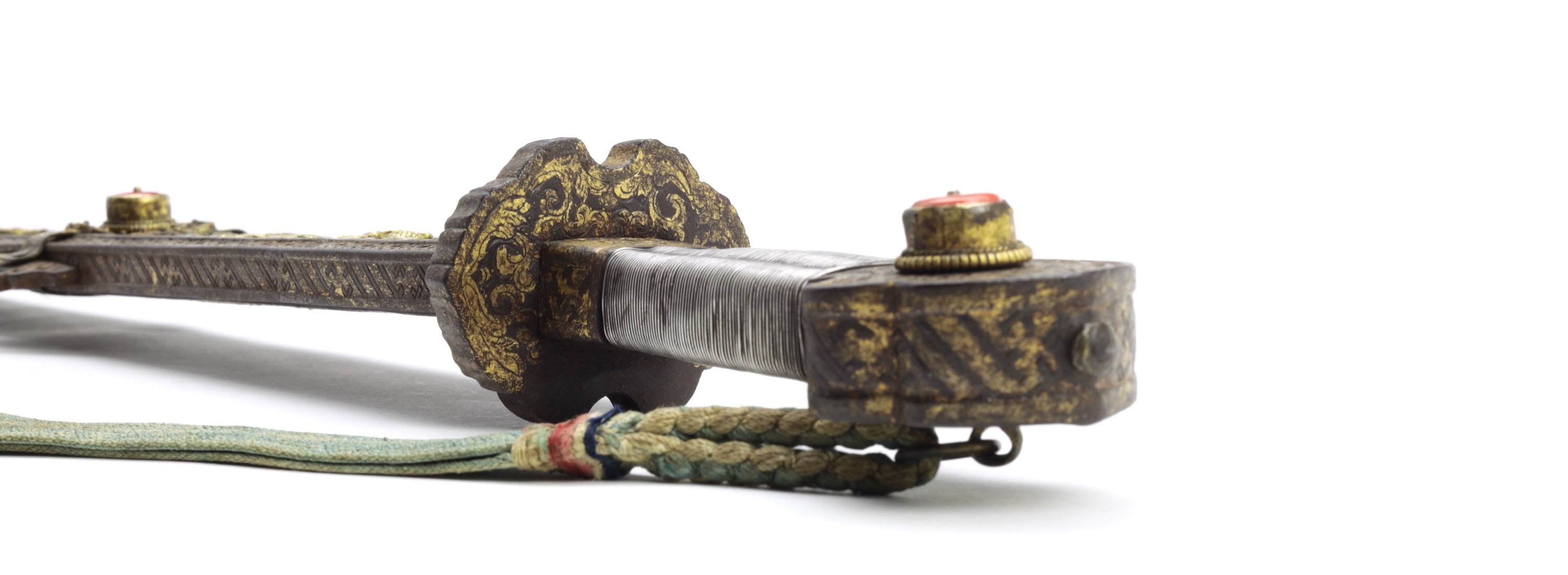








This kind of fine work is typical for Tibetan work of the 15th-16th centuries.
With a very fine Nepalese blade, but kard-like hilt and scabbard.

